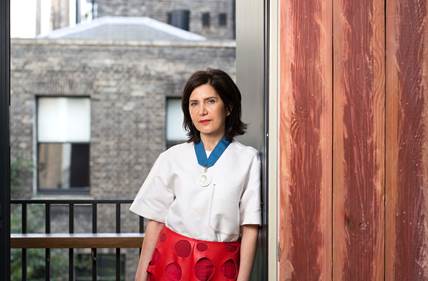Farshid Moussavi is an architect, principal of Farshid Moussavi Architecture (FMA) and Professor in Practice of Architecture at Harvard University Graduate School of Design. She was a co-founder of the London-based Foreign Office Architects (FOA), integrating architecture, urban design, and landscape architecture in a wide range of projects internationally. At FMA, Moussavi has completed her first US commission, the Museum of Contemporary Art in Cleveland, the flagship store for Victoria Beckham in London, and its installation at the 13th Architecture Biennale in Venice (2012). She is currently working on a wide range of projects including a residential complex in the La Défense district of Paris, a residential complex in Montpellier and an office complex in the City of London.

Farshid Moussavi. Image courtesy of Royal Academy of Arts
At her previous practice FOA, Moussavi co-authored many award-winning projects including the Yokohama International Cruise Terminal and the Spanish Pavilion at the Aichi International Expo in Japan; in Spain, in the UK, the Ravensbourne College of Media and Communication in London and the John Lewis Department Store and Cineplex in Leicester, the South-East Coastal Park in Barcelona, the Municipal Theatre and Auditorium in Torrevieja, and the Carabanchel Social Housing in Madrid; as well as the Meydan Retail Complex in Istanbul, Turkey. FOA was also part of the team that designed the Olympic Park and its legacy vision for the Lee Valley as part of the London bid to the International Olympic Committee.
Moussavi trained at Harvard’s Graduate School of Design, University College London and Dundee University, and has taught and served as an External Examiner in academic institutions worldwide. She has also been a member of the Steering Committee of the Aga Khan Award for Architecture since 2004, and a trustee of the London Architecture Foundation and the Whitechapel Gallery in London since 2009. Moussavi is a columnist for the Architectural Review magazine and has published a ground breaking series of books, ‘The Function of Ornament’, ‘The Function of Forms’, and ‘the Function of Style’, based on her research and teaching at Harvard, using real-world examples drawn from many times and places to examine the role that basic concepts like form, style and ornament ought to play in solving the problems of contemporary architecture. Her blending of theoretical rigor, practical experience and pedagogical dialogue has been essential to advancing the theory and practice of architecture.
Christopher Le Brun, President of the Royal Academy, said ‘I’m particularly pleased to welcome Farshid because the Royal Academy architects currently comprise a more distinguished group than at any time in its long history’.


























